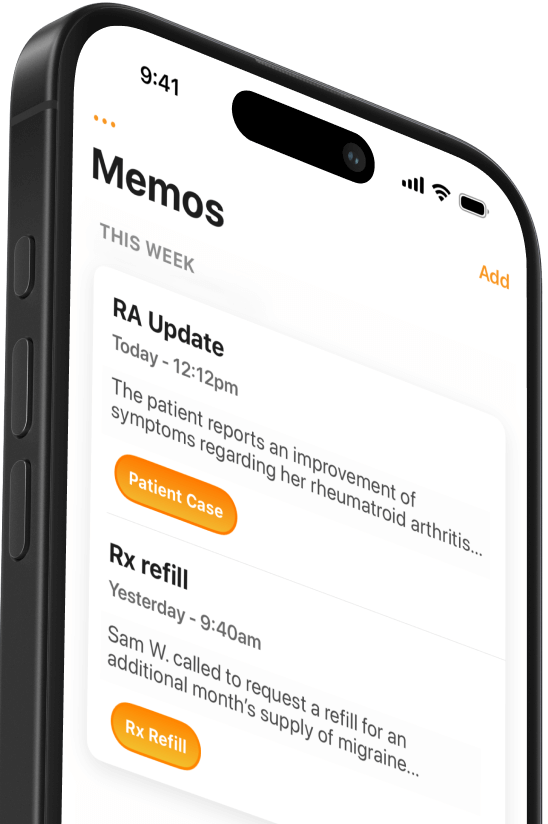How to combat physician burnout during COVID-19
Physicians are feeling the pressure on all sides during COVID-19. Self-care is critical—watch your hours, seek support, and optimize documentation workflows.


Popular articles
Physicians and other health care professionals are playing a critical role in the response to COVID-19, and we need them to stay healthy as long as possible. As doctors do everything they can, we also need to combat physician burnout during COVID-19.
Physician burnout during COVID-19
COVID-19 is not going to be a fast crisis. Experts predict a U.S. peak might occur around July, with the outbreak lasting until early fall.
But physicians and other healthcare providers are already feeling the impact. COVID-19 has given them a lot to think about beyond worries about patients.
Many doctors are concerned for the wellbeing of their colleagues. Still others are dealing with pay cuts and layoffs. Every healthcare worker is concerned for their own health, especially the 30% of physicians aged 60 or older.
With so many factors threatening healthcare workers’ wellbeing, it’s more important than ever to combat physician burnout.
How to combat physician
Physician burnout is a condition in which doctors lose satisfaction and a sense of efficacy in their work. It typically shows up as three symptoms:
- Exhaustion - “I’m not sure how much longer I can keep going like this.” You experience physical and emotional exhaustion.
- Compassion fatigue - “I can’t believe people are acting this way.” You become frustrated by patients and families.
- Lack of efficacy - “What’s the use?” You begin to doubt that you are making a difference.
There are many interventions to address burnout at institutional and individual levels. Here are five areas to keep in mind during COVID-19.
1. Keep up with basic needs
At times of crisis it can be easy to forget about basic needs like food, water, safety, and sleep. Doctors working long days may skimp on personal care, and nobody but them is regulating their well-being.
As a physician, it’s up to you to keep your own health and well-being top of mind. Then encourage colleagues to do the same. Self care doesn’t come naturally to many in helping professions, so make a conscious effort to eat and sleep sufficiently during the pandemic.
2. Watch your work hours
Whether you’re an employee or manager, a top priority should be balancing workload. It’s vital to notice the number of hours physicians are working and make sure they receive breaks.
“The workload is markedly escalating and it’s escalating in very unusual ways,” Dr. Mark Linzer told the AMA. To help physicians avoid burnout, employers need to distribute work hours as evenly as possible.
3. Share mental health support
Everyone experiences increase stress during a pandemic, especially as a result of social isolation. Physicians are especially vulnerable to negative mental health effects as they balance caring for patients with their own wellbeing.
Make sure to follow mental health best practices: feel your feelings, intentionally employ coping strategies, perform regular checkins with yourself, take breaks from social media, and reconnect with the importance of your work.
See a full list of mental and behavioral health resources for COVID-19.
4. Leaders should demonstrate compassion
Healthcare workers are especially fearful of getting COVID-19 and giving it to family members. And with a constant stream of information on the virus, many worry they will miss something.
Leadership in clinics, hospitals, and health systems can help by showing compassion and empathy for those on the front lines. This can be as simple as an email from the CEO acknowledging the important work being done. In some cases leadership is going further by balancing layoffs with executive pay cuts.
5. Keep documentation efficient
Now may not seem like the best time to tweak your EMR workflow. But many doctors spend up to six hours a day in the EHR, so it’s important to document care efficiently. COVID-19 aside, surveys show that EHRs and administrative tasks are a leading contributor to physician burnout.
Do what you can to optimize your EMR workflow and reduce after hours EHR time. Make sure to share clerical tasks with your team, compete most documentation in the room, and use time-saving tools like mobile dictation.
COVID-19 resources for doctors
As you combat physician burnout, make sure to reference these other valuable COVID-19 resources for physicians:
Related Articles


We Get Doctors Home on Time.
Contact us
We proudly offer enterprise-ready solutions for large clinical practices and hospitals.
Whether you’re looking for a universal dictation platform or want to improve the documentation efficiency of your workforce, we’re here to help.




